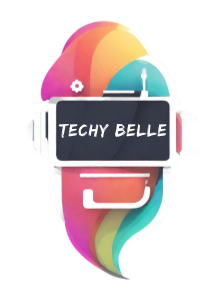How to Work in Tech
4 Key Strategies for Success
I’m going to let you in on a little secret: the tech industry is thriving, and there’s room for more creative minds and innovative thinkers like you. This isn’t just about coding or software development; it’s also about design, project management, data analysis, and much more.
You might be thinking that breaking into tech seems daunting, with new technologies emerging at the speed of light. Don’t worry too much about keeping up with every single trend. The focus here is to give you the clarity and direction you need to carve out your slice of this vast digital pie.
In my opinion, the smartest way to start is by developing a strategic approach. This means understanding your strengths, pinpointing where they align with tech, and taking targeted steps to build your career. This article is here to help you navigate through those steps.
So what should you expect from this quick guide? I’m going to walk you through the essentials, one step at a time. You’re going to find out about mapping your interests to tech jobs, growing your skill set, gaining practical experience, and, finally, turning all that hard work into a fulfilling job offer. Let’s set the stage for success.
1. Identifying the Right Tech Role for You

Now let’s zero in on finding the best fit for you in the tech industry. It’s not just about having the skills; it’s also about finding a role that resonates with you on a personal and professional level. To kick things off, you’ll need to do a bit of self-reflection.
Firstly, consider what excites you about technology. Is it the logic behind coding, the creative potential of design, or maybe the strategic aspects of project management? This isn’t just about your current abilities; it’s about where you see yourself thriving and what aspects of tech spark your curiosity.
Once you’ve pinpointed your interests, it’s time to match them to the vast array of tech roles out there. From software development to data science, and from cybersecurity to user experience (UX) design, each field has its unique blend of challenges and rewards. You’re likely to discover something that aligns perfectly with your passions.
Understanding the various specializations is critical, and here’s where research kicks in. Cast a wide net: read job descriptions, talk to insiders, join webinars and tech meetups, and don’t shy away from reaching out to professionals on platforms like LinkedIn. It’s crucial to grasp the nuances of each role, including what a typical day might look like and the growth potential in that segment.
Keep in mind the ever-changing landscape of the tech industry. Positions that are in demand today, such as cloud engineers or AI specialists, might evolve tomorrow. Choose something that not only fits you now but also promises continued opportunity as you grow in your career.
Don’t worry too much about pigeonholing yourself early on. The tech sector often values diverse skill sets and the ability to adapt. Your first job doesn’t have to define your entire career. In fact, the experience you gain in one role often opens doors to other fascinating tech niches down the line.
2. Acquiring Essential Skills and Education

Now that you’ve pinpointed the tech role that resonates with you, it’s time to focus on acquiring the tools of the trade: skills and education. I’m going to break down the routes you can take to build a strong foundation in technology. Remember, there’s no one-size-fits-all approach here—you can tailor your education to suit your needs and preferences.
If you’re considering formal education, degrees in computer science, information technology, or software engineering are typically sought after. However, don’t worry too much about being locked into a traditional academic path. The tech industry is known for its flexibility and valuing skill over pedigree. In fact, many successful professionals in tech are self-taught or have transitioned from other fields.
Self-teaching is a viable option, thanks to a wealth of online resources. If you want to go this route, free and paid tutorials, online forums, and coding practice sites are your best friends. The key is to stay disciplined and set structured goals. For those who prefer a more structured learning environment, coding bootcamps have emerged as an intense, quick way to gain practical skills.
A major part of learning is proving you can apply your knowledge, so consider getting certifications in specific technologies or methodologies. These can bolster your resume and demonstrate to employers that you have the expertise they’re searching for. Choose certifications that are widely recognized and relevant to your chosen field.
I’m not just going to leave you with a bunch of learning options. In the next section, ‘Gaining Real-World Experience’, I’ll take you through translating what you’ve learned into tangible, real-world experience that employers crave. It’s one thing to know your stuff; it’s another to show you can perform in a professional environment.
3. Gaining Real-World Experience

Let’s bridge the gap between the skills you’ve acquired and landing your first tech gig. Real-world experience is key, and there are several ways to get your foot in the door.
Internships and entry-level positions are a goldmine for learning. They give you the lay of the land, teach you workplace dynamics, and most importantly, let you apply what you’ve learned. Don’t worry too much about the salary at this stage; focus on the experience and the doors it will open.
Building a professional network is as vital as the skills on your resume. Attend industry meetups, join tech forums, and connect with peers and mentors on professional social networks like LinkedIn. The tech community is surprisingly supportive, and you’re going to find a wealth of knowledge and opportunities there.
Another powerful asset you have is your own work. Develop projects that interest you and make them public. Use platforms like GitHub to showcase your coding prowess, Dribbble for your design skills, and even WordPress to document your journey. This not only demonstrates your technical abilities but also your passion and dedication to personal projects.
In the next section, we’ll take what you’ve built – an impressive skill set and a solid portfolio – and turn that into a robust strategy for landing your first tech job. Trust me, the efforts you’ve put into gaining real-world experience will pay off when you see how well-prepared you are for the interview process.
4. Landing Your First Tech Job and Beyond

Finally, you’ve reached the stage where you’re ready to dive into the job market. But don’t worry too much about finding the ‘perfect’ job right away. Your first role is a stepping stone, one that offers valuable experience and opens doors for future opportunities.
To master the tech job application process, focus on tailoring your resume to highlight relevant skills and experiences. Don’t underestimate the power of a well-written cover letter; it can set you apart from other candidates.
When you line up interviews, practice common tech interview questions and be ready to discuss your portfolio. This isn’t just about technical know-how, it’s also about showing your passion and fit for the company culture.
Once you land that job, remember that the tech field is constantly evolving. This means your learning shouldn’t stop at the job offer. Embrace continuous learning to keep up with industry trends and enhance your skill set.
Always be open to new challenges and roles that will help you grow. In my opinion, a career in tech offers a lifetime of learning and reinvention. Choose something that resonates with you, and you’ll find the tech industry a rewarding space full of opportunity.
